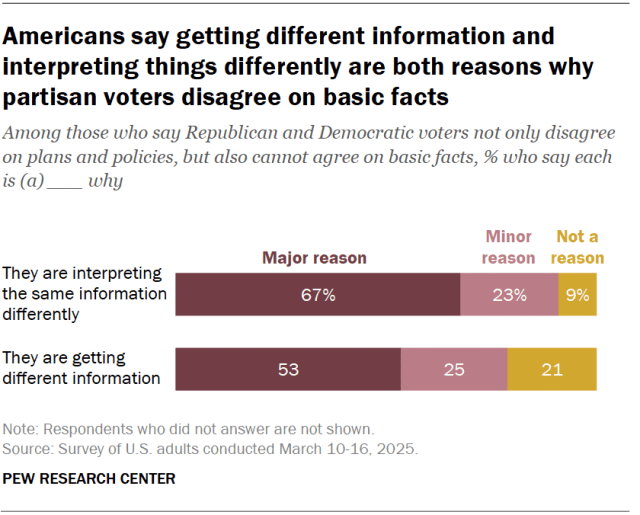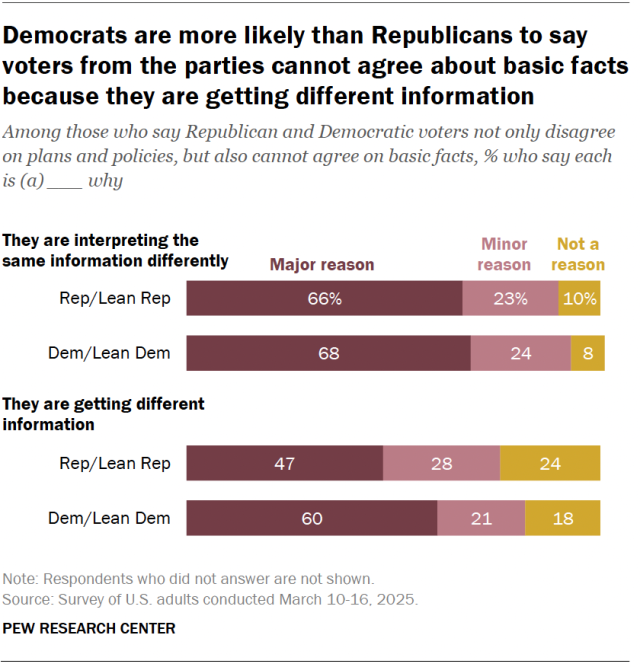Eight-in-ten U.S. adults say that when it comes to important issues facing the country, Republican and Democratic voters not only disagree on plans and policies, but also cannot agree on basic facts.

Another 18% say voters in opposing parties can agree on basic facts, even if they disagree about policies, according to a Pew Research Center survey conducted in March.
Views are essentially unchanged since we first asked a similar question in 2016. That year, 81% said that most Donald Trump and Hillary Clinton supporters could not agree on basic facts.
One thing Republicans and Democrats can largely agree on, however, is their disagreement: 83% of Democrats and independents who lean Democratic now say voters from the two parties disagree on the basic facts, as do 79% of Republicans and GOP leaners.
These views exist amid wide divides between Trump and Kamala Harris voters over many – but not all – topics, including cultural issues and the role of government. Republicans and Democrats more broadly also often turn to different sources of news and information, and many view those in the other party in a negative light.
Why can’t partisans agree about basic facts?

The survey asked all respondents who say Democratic and Republican voters cannot agree about basic facts whether two potential factors are reasons why. Among this group, 67% say a major reason is that partisan voters are interpreting the same information differently. And 53% say a major reason is that Republican and Democratic voters are getting different information altogether.
These two answers are not mutually exclusive. In fact, 40% of those who received this question say both are major factors.

Majorities of both Democrats (68%) and Republicans (66%) who say the two parties can’t agree on basic facts say a major reason is that they’re interpreting the same information differently.
But Democrats are somewhat more likely than Republicans to say that voters in each party are getting different information entirely (60% vs. 47%).
Note: Here are the questions used for this analysis, the topline and the survey methodology.
